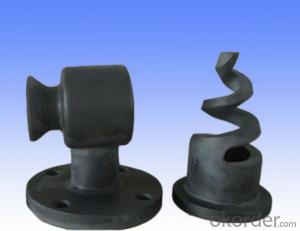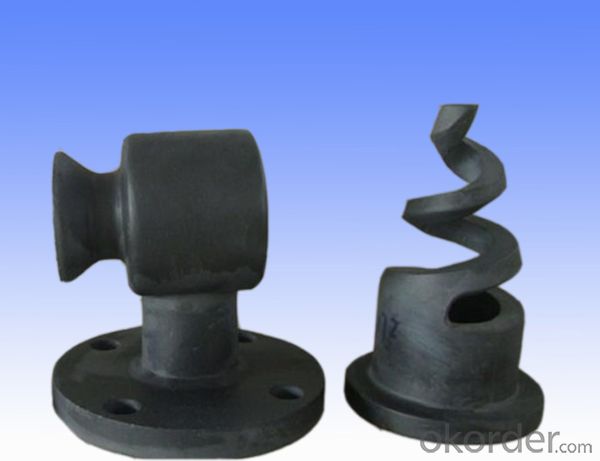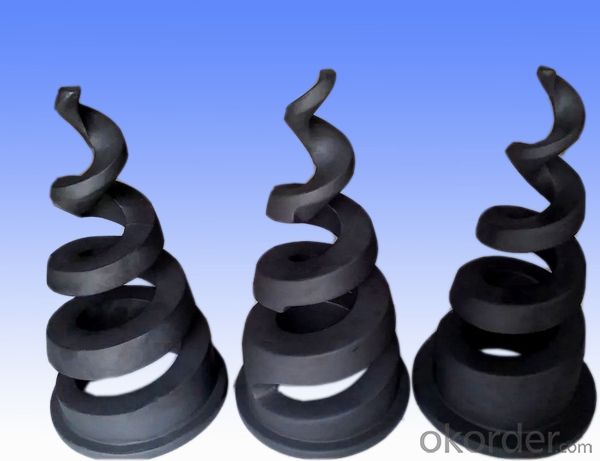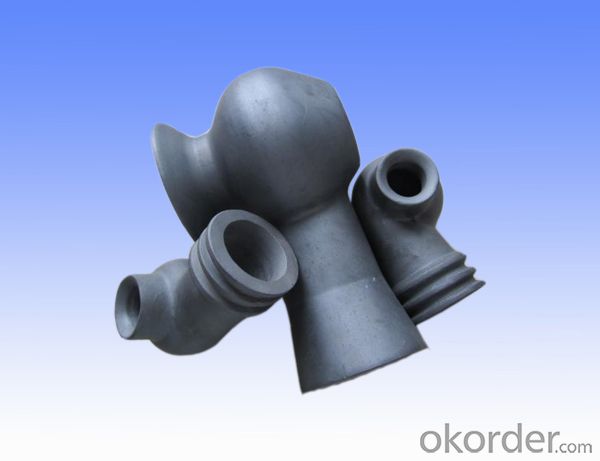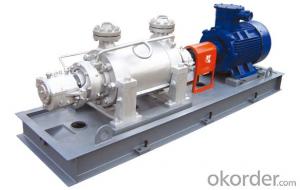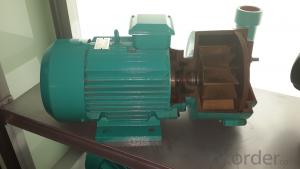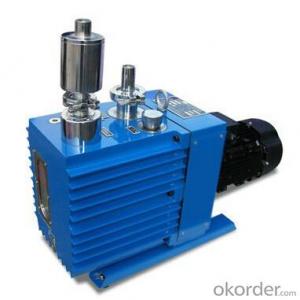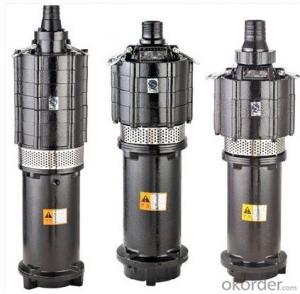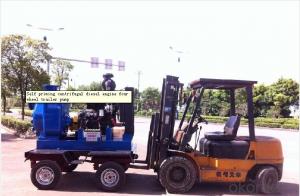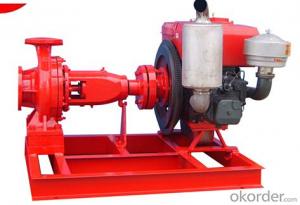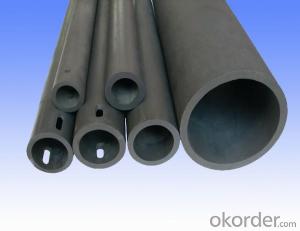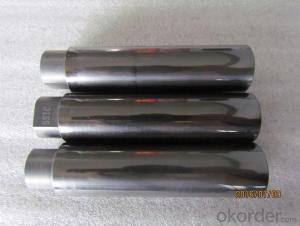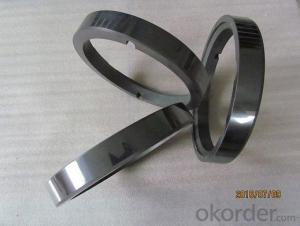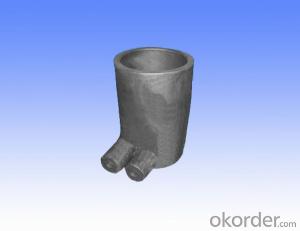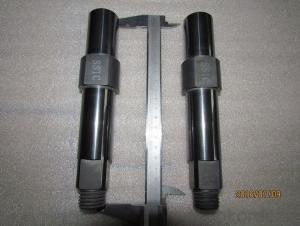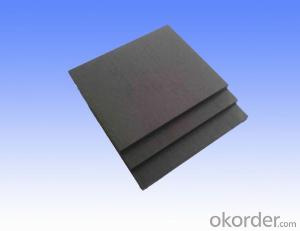SSIC Silicon carbide nozzle
- Loading Port:
- China main port
- Payment Terms:
- TT OR LC
- Min Order Qty:
- 5 m.t
- Supply Capability:
- 50 m.t/month
OKorder Service Pledge
OKorder Financial Service
You Might Also Like
Specification
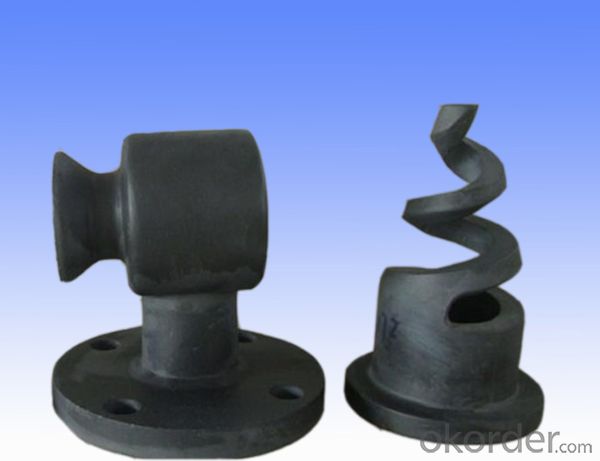
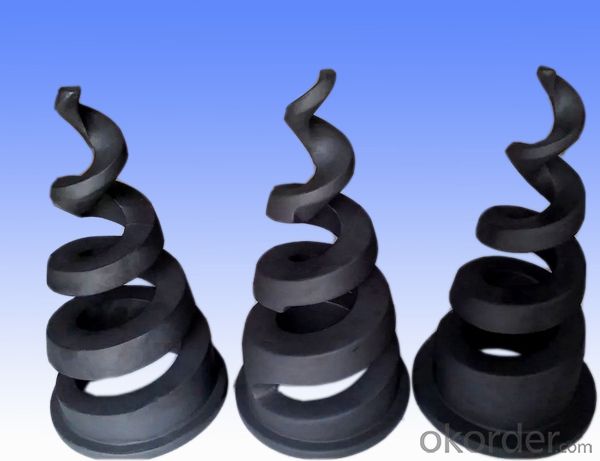
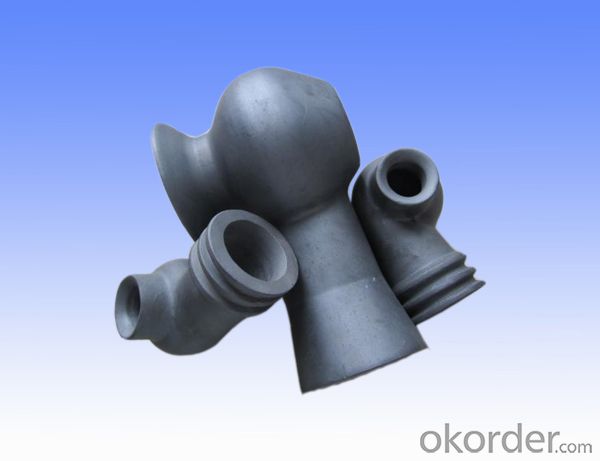
Tailor-made for customers all kinds of pumps with my company, kettle, bearing no pressure sintering silicon carbide mechanical seal, and all kinds of resistance corrosion pump parts and the accessories. Our company pressureless sintered silicon carbide products a reaction bonded silicon carbide products, can easily adapt to the harsh working conditions, in strong corrosive, strong wear, high temperature, high pressure, high strength harsh harsh under complex conditions is more outstanding. At the same time, our company to provide customers with nozzles, armored body armor plate and other special-shaped pieces of custom-made service.
Compared with the reaction sintered silicon carbide product (SSIC), the production process of the sintered silicon carbide product (RBSIC) is complex and the production investment is high. In addition, whether it is in the resistance to corrosion and abrasion, compressive and flexural fracture resistance of or high pressure, high temperature and other properties are more excellent, this is pressureless sintering silicon carbide products will in the near future completely replace reaction bonded silicon carbide products is one of the important reasons. The main varieties of the pressureless sintering silicon carbide products with all kinds of mechanical seal with sealing ring and moving ring and static ring, corrosion resistant pump, magnetic pump, shield pump components. At the same time, the production special-shaped pieces of nozzle, wire drawing die, armor plate. According to the drawings, we will provide customers with satisfactory products and customer satisfaction. Let customer satisfaction is one of the purposes of our company has been pursued, but also one of the objectives pursued by all the staff of our company.
Features: high temperature resistance, wear resistance, corrosion resistance, oxidation resistance, hardness, heat conduction
Main products: mechanical seals, pump parts, nozzles, bullet proof plate
Mechanical seals: high hardness, high wear resistance, good self - Lubrication and high heat conductivity, so the service life of mechanical seal is greatly improved.
Pump: resistance to corrosion and wear characteristic of the pressureless sintering silicon carbide become magnetic pump sliding bearing, resistant corrosion pump sleeve, shielding pump assembly, etc. various kinds of pump of choice
Nozzle: wear resistant, high temperature resistance, high hardness characteristics of the normal pressure sintering silicon carbide nozzle to become a perfect alternative to carbide nozzle
Armor: light weight, high hardness, good ballistic performance, pressureless sintering of SiC for your life and property security escort
Here are some of the pressure sintered silicon carbide products, physical and chemical parameters:
medium | content | Causticity | |||||||
Atmospheric SIC | The reaction SIC WC | WC | AL2O3 | ZrO2 | Si3N4 | stainless steel | steel | ||
HNO3 nitric acid | 50% | A | A | C | A | A | C | C | C |
Hydrochloric acid HCI | 35% | A | A | C | A | A | C | C | A |
Sulfuric acid H2SO4 | 98% | A | A | C | A | A | C | C | A |
Hydrofluoric acid HFF | 40% | A | C | C | C | C | C | C | C |
Phosphoric acid H5PO4 215OC | 85% | C | C | C | C | C | C | C | C |
HNO3+HF | 20%+5% | A | C | C | C | C | C | C | C |
Sodium chlorate NaCIO | 10% | A | B | C | A | A | A | C | A |
Sodium hydroxide NaOHH | 50% | A | C | A | B | A | B | A | A |
Potassium hydroxide KOH | A | C | A | B | A | B | A | A | |
Acetic acid CH3COOHH | 80% | A | A | C | A | A | C | C | C |
Sodium sulfate + Na2CO3 + H2SO4 925OC
| A | A | C | A | A | C | C | B | |
Silica solution SIO2
| B | C | C | C | C | C | |||
Assessment Method: the specimen prior polishing, immersed in the test liquid (70OC) for 100 hours, the weight was measured and observed microstructure, weight reduction is calculated by the degree of corrosion was observed microstructure for corrosion to comprehensive judgments. | |||||||||
A level (corrosion): corrosion rate ≤0.125mm / ingredients in a small amount of corrosion observed slice | |||||||||
Level B (somewhat resistant): corrosion rate = 0.125-1.0mm / or annual corrosion rate ≤0.125mm / observe a large number of corrosion | |||||||||
Class C (resistant to corrosion): corrosion rate ≥1.0mm / or the main ingredient of Corrosion
Silicon carbide performance indicators
Index Name
| Atmospheric SiC | Reaction Bonded Silicon Carbide |
Purity (%) of silicon carbide | > 97 | >90 |
Density (g / cm) | 3.06-3.15 | >3.05 |
Particle size (um) | 0.5-0.7 | 8-20 |
Hardness (HRA) | ≥90 | ≥90 |
Flexural Strength (MPa) | 400-580 | 350-450 |
Compressive strength (MPa) | 3900 | >2500 |
Fracture Strength (MPa) | 3.05-4.6 | 4.3 |
Elastic Modulus (GPa) | 380-410 | 420 |
Thermal conductivity | 102.6 | 35-110 |
Coefficient of thermal expansion (1 / ℃) | 4.02×10 | 4.3×10 |
Poisson's ratio | 0.14 | 0.15 |
- Q: What are the common methods for lubricating a pump shaft?
- Depending on the type of pump and its specific needs, there exist various common approaches for lubricating a pump shaft. One approach involves the utilization of oil lubrication. In this method, oil is directly applied to the pump shaft and bearings. The oil acts as a lubricant, minimizing friction and wear between the components in motion. Oil lubrication can be achieved through different techniques, such as splash lubrication, where oil is splattered onto the rotating parts, or forced lubrication, where oil is pressurized to guarantee proper lubrication. Another method involves the use of grease lubrication. Grease, a viscous lubricating substance, is applied to the pump shaft and bearings. It provides long-lasting lubrication while reducing friction and heat accumulation. Grease is often preferred in situations where a continuous oil supply is impractical or unnecessary. In certain scenarios, pump shafts may be lubricated with a dry lubricant, such as graphite or molybdenum disulfide. These dry lubricants are applied as a thin film or coating on the shaft and bearings. They offer a low-friction surface, reducing wear and extending the pump's lifespan. Furthermore, some pumps may feature a self-lubricating mechanism, like a sealed bearing system. These mechanisms are designed to automatically retain and distribute lubrication, eliminating the requirement for manual lubrication. It is crucial to note that the specific method of lubrication for a pump shaft should be determined based on the manufacturer's recommendations and the operating conditions of the pump. Regular maintenance and monitoring of lubrication levels are vital to ensure optimal performance and prevent premature wear or failure of the pump.
- Q: What are the factors that can cause excessive heat in a pump shaft?
- There are several factors that can cause excessive heat in a pump shaft. Some common factors include friction between rotating parts, inadequate lubrication, misalignment of the pump and motor, high operating speeds, and excessive loads on the pump. Additionally, external factors such as ambient temperature, improper cooling or ventilation, and restricted flow can also contribute to the build-up of heat in a pump shaft.
- Q: How often should a pump shaft be inspected?
- A pump shaft should be inspected regularly to ensure its proper functioning and prevent any potential failures. The frequency of inspections will depend on various factors such as the type of pump, its usage, and the environment it operates in. As a general guideline, it is recommended to inspect a pump shaft at least once a year. However, certain applications may require more frequent inspections, such as pumps operating in corrosive or abrasive environments, high-speed pumps, or pumps with a history of shaft failures. Additionally, it is important to conduct inspections after any major maintenance or repair work has been performed on the pump. Regular inspections allow for the detection of any signs of wear, misalignment, or damage to the pump shaft, which can help prevent unexpected breakdowns and minimize downtime.
- Q: How is a pump shaft aligned?
- A pump shaft is aligned by using precision measuring tools and techniques such as dial indicators, laser alignment systems, or straightedges to ensure that the pump shaft is perfectly straight and in line with the motor shaft. This process involves adjusting the shims or using other means to correct any misalignment and achieve optimal alignment for efficient and reliable pump operation.
- Q: Can a pump shaft be coated for additional protection?
- Certainly, a pump shaft can be coated to provide extra protection. Coating the pump shaft not only boosts its durability and resistance against various environmental factors like corrosion, wear, and friction, but it also extends the lifespan of the pump and improves its overall performance. There are multiple coating options available, such as ceramic, chrome, nickel, and polymer-based coatings, each offering a protective layer that decreases the likelihood of premature shaft failure. Moreover, these coatings can provide additional advantages, like chemical resistance or increased hardness, depending on the specific requirements of the application. Hence, it is crucial to carefully choose the appropriate coating based on the particular operating conditions and anticipated challenges faced by the pump shaft.
- Q: What are the common methods for reducing deflection in a pump shaft?
- There are several common methods for reducing deflection in a pump shaft. 1. Increasing the shaft diameter: One of the simplest ways to reduce deflection is by increasing the diameter of the pump shaft. A larger diameter provides more stiffness and rigidity, reducing the tendency for deflection under load. 2. Using a stiffer material: Choosing a material with higher stiffness and strength properties can help reduce deflection. Materials like stainless steel or carbon steel are often preferred for pump shafts due to their superior mechanical properties. 3. Using multiple bearings: Placing multiple bearings along the length of the pump shaft can help support and stabilize it, reducing deflection. These bearings distribute the load more evenly, minimizing bending and deflection. 4. Optimizing bearing spacing: Properly spacing the bearings along the pump shaft is important for reducing deflection. By placing the bearings closer together, the pump shaft is better supported, minimizing deflection between the bearings. 5. Using a thicker pump shaft wall: Increasing the thickness of the pump shaft wall can provide additional stiffness and strength, reducing deflection. However, this method may increase the overall weight and cost of the pump shaft. 6. Incorporating external supports: In some cases, external supports such as brackets or additional structures can be used to further stabilize the pump shaft and reduce deflection. These supports can help distribute the load and minimize bending. 7. Proper alignment and balancing: Ensuring proper alignment and balancing of the pump shaft is crucial for reducing deflection. Misalignment or imbalance can cause excessive forces on the shaft, leading to deflection and other issues. Regular maintenance and alignment checks are necessary to prevent deflection. It is important to note that the specific method or combination of methods used to reduce deflection in a pump shaft may vary depending on the specific pump design, application, and operating conditions. Consulting with a mechanical engineer or pump specialist is recommended to determine the most appropriate method for a particular case.
- Q: What are the consequences of excessive pump shaft vibration?
- Excessive pump shaft vibration can have several consequences, both for the pump itself and for the overall system it is a part of. Firstly, excessive vibration can lead to premature wear and tear on the pump components. The continuous shaking and oscillation can cause damage to the impeller, bearings, seals, and other internal parts. This can result in reduced efficiency, decreased performance, and ultimately, pump failure. Furthermore, excessive vibration can also cause leakage in the pump system. The continuous movement can cause seals to loosen or break, leading to fluid leaks. These leaks not only result in loss of product or fluid, but they can also be hazardous if the fluid being pumped is toxic or harmful. In addition, excessive pump shaft vibration can also impact the surrounding equipment and structures. The vibrations can be transmitted to other components in the system, such as pipes, valves, and nearby machinery. This can lead to increased wear and tear on these components and potentially cause malfunctions or failures in the overall system. Moreover, excessive vibration can also have negative effects on the pump's performance and energy consumption. The increased movement of the shaft can cause the pump to operate less efficiently, requiring more energy to produce the desired flow and pressure. This can result in higher operating costs and decreased overall system efficiency. Lastly, excessive pump shaft vibration can have safety implications. The continuous shaking can cause instability in the pump or its foundation, leading to potential accidents or injuries. In extreme cases, the vibration can even cause the pump to detach from its base or fall over, posing a significant risk to personnel and equipment. Overall, excessive pump shaft vibration can have numerous consequences, ranging from increased wear and tear, reduced efficiency, and potential system failures, to safety hazards and increased operating costs. Therefore, it is crucial to monitor and address excessive vibration to ensure optimal pump performance and prevent any negative impacts on the system.
- Q: How is the pump shaft protected against electrical grounding?
- The pump shaft is protected against electrical grounding by using insulation materials or coatings that prevent direct contact between the shaft and any conductive parts, thus isolating it from any electrical current flow.
- Q: How to change the shaft seal leakage of fire pump?
- The joint between the motor and the water pump is provided with a fixed bolt, and the sealing ring can be seen after the bolt of the gland of the pump body is disassembled
- Q: What are the common methods for repairing a pump shaft in the field?
- There are several common methods for repairing a pump shaft in the field. One of the most common methods is shaft re-machining. This involves removing the damaged section of the shaft and re-machining it to the required dimensions. This can be done using a lathe or other machining equipment. The re-machined section is then typically secured to the rest of the shaft using a keyway or other fastening method. Another method is shaft sleeving. This involves adding a sleeve around the damaged section of the shaft. The sleeve is typically made of a durable material such as stainless steel or bronze. It is then secured in place using adhesive or a press fit. This method can be useful when the damage to the shaft is minor and does not require complete replacement. Welding is also a common method for repairing a pump shaft. This involves welding the damaged section of the shaft using a suitable welding process, such as gas tungsten arc welding (GTAW) or shielded metal arc welding (SMAW). Welding can be effective for repairing cracks or other types of damage, but it requires skilled operators to ensure proper heat control and prevent further damage to the shaft. In some cases, a damaged pump shaft may need to be completely replaced. This typically involves removing the old shaft and installing a new one of the correct dimensions and material. This method is often necessary when the damage to the shaft is severe or if other repair methods are not feasible. Overall, the specific method used for repairing a pump shaft in the field will depend on the extent and type of damage, as well as other factors such as time and budget constraints. It is important to consult with a qualified technician or engineer to determine the most appropriate repair method for a specific situation.
Send your message to us
SSIC Silicon carbide nozzle
- Loading Port:
- China main port
- Payment Terms:
- TT OR LC
- Min Order Qty:
- 5 m.t
- Supply Capability:
- 50 m.t/month
OKorder Service Pledge
OKorder Financial Service
Similar products
Hot Searches
Related keywords
